Items filtered by date: October 2023
Key Things About Children’s Foot Health
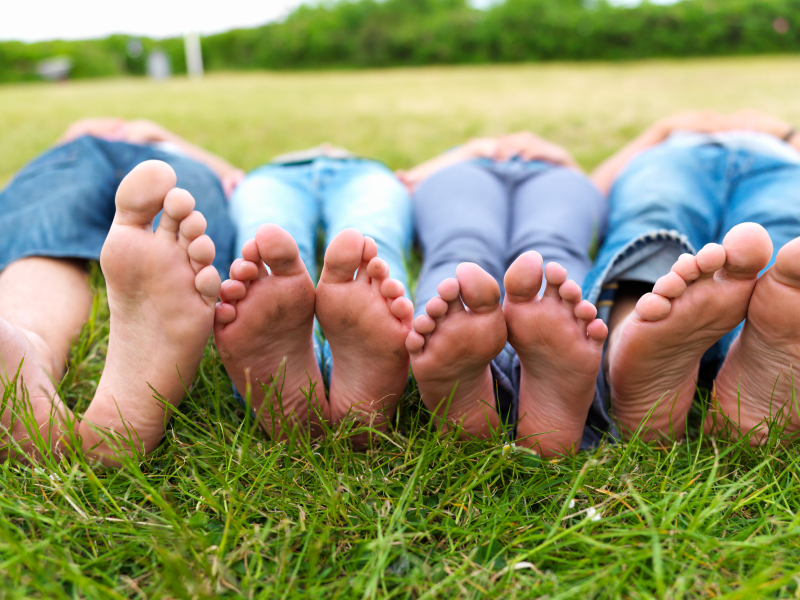
The most essential aspect of children's foot health is ensuring proper growth and development. As children grow, their feet are vulnerable to various deformities and conditions due to the flexibility of the bones and the rapid rate of growth. Proper footwear, timely detection of abnormalities, and addressing any concerns early on are paramount. Wearing ill-fitting shoes, neglecting foot-related symptoms, or overlooking structural abnormalities can lead to long-term issues affecting their gait, posture, and overall musculoskeletal health. As your child grows, it is suggested that you schedule regular checkups with a podiatrist as their feet are the foundation of their overall health, mobility, and well-being as they mature.
Making sure that your children maintain good foot health is very important as they grow. If you have any questions, contact one of our podiatrists of William Street Podiatry. Our doctors can provide the care you need to keep you pain-free and on your feet.
Keeping Children's Feet Healthy
Having healthy feet during childhood can help prevent medical problems later in life, namely in the back and legs. As children grow, their feet require different types of care. Here are some things to consider...
Although babies do not walk yet, it is still very important to take care of their feet.
Avoid putting tight shoes or socks on his or her feet.
Allow the baby to stretch and kick his or her feet to feel comfortable.
As a toddler, kids are now on the move and begin to develop differently. At this age, toddlers are getting a feel for walking, so don’t be alarmed if your toddler is unsteady or ‘walks funny’.
As your child gets older, it is important to teach them how to take care of their feet.
Show them proper hygiene to prevent infections such as fungus.
Be watchful for any pain or injury.
Have all injuries checked by a doctor as soon as possible.
Comfortable, protective shoes should always be worn, especially at play.
If you have any questions please feel free to contact one of our offices located in William Street in New York, NY, Forest Hills, NY, and Broadway in New York, NY . We offer the newest diagnostic and treatment technologies for all your foot and ankle needs.
Benefits of Custom Orthotics
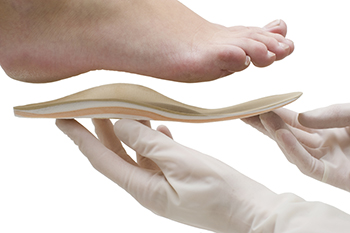
Foot orthotics, whether over-the-counter or custom-made, are specialized insoles designed to address various foot and gait-related issues. They work by correcting imbalances in foot structure and gait, improving posture, and relieving pain through support and pressure redistribution. Custom orthotics, which are molded to the individual's foot shape, offer a personalized fit ideal for specific alignment problems, pathologies, or deformities. They aid in healing by reducing strain on injured areas and can prevent conditions like stress fractures, tendonitis, and tendon rupture. Orthotics also provide cushioning, shock absorption, and enhanced stability, thereby reducing the risk of falls. Athletes can benefit from custom foot orthotics by improving foot support, limiting shock, and reducing tendon stress. This can enhance performance while minimizing injury risk. Over-the-counter insoles may offer basic comfort but lack the effectiveness of custom orthotics. This makes custom orthotics the preferred choice for those with unique foot-related needs. It is suggested that you make an appointment with a podiatrist to ensure the proper fit and function of orthotics tailored to your individual foot needs.
If you are having discomfort in your feet and would like to try orthotics, contact one of our podiatrists from William Street Podiatry. Our doctors can provide the care you need to keep you pain-free and on your feet.
What Are Orthotics?
Orthotics are inserts you can place into your shoes to help with a variety of foot problems such as flat feet or foot pain. Orthotics provide relief and comfort for minor foot and heel pain but can’t correct serious biomechanical problems in your feet.
Over-the-Counter Inserts
Orthotics come in a wide variety of over-the-counter inserts that are used to treat foot pain, heel pain, and minor problems. For example, arch supports can be inserted into your shoes to help correct overarched or flat feet, while gel insoles are often used because they provide comfort and relief from foot and heel pain by alleviating pressure.
Prescription Orthotics
If over-the-counter inserts don’t work for you or if you have a more severe foot concern, it is possible to have your podiatrist prescribe custom orthotics. These high-quality inserts are designed to treat problems such as abnormal motion, plantar fasciitis, and severe forms of heel pain. They can even be used to help patients suffering from diabetes by treating foot ulcers and painful calluses and are usually molded to your feet individually, which allows them to provide full support and comfort.
If you are experiencing minor to severe foot or heel pain, it’s recommended to speak with your podiatrist about the possibilities of using orthotics. A podiatrist can determine which type of orthotic is right for you and allow you to take the first steps towards being pain-free.
If you have any questions please contact one of our offices located in William Street in New York, NY, Forest Hills, NY, and Broadway in New York, NY . We offer the newest diagnostic and treatment technologies for all your foot and ankle needs.
Gout Pain Can Be Managed
Common Basketball Injuries
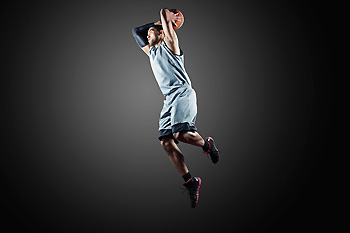
With the physical demands of basketball, players are constantly at risk of injuries. Among these, ankle injuries are the most common for basketball players. Others basketball-related injuries include sprains, fractures, impingement, and Achilles tendon problems. Basketball demands repetitive jumping, rapid changes in motion, and explosive movements, all of which make a player prone to musculoskeletal injuries. Ankle injuries alone account for nearly a quarter of all basketball-related injuries. Sprained ankles occur when the ligaments that support the ankle are stretched or torn, often due to sudden changes in direction or landing improperly from a jump. Fractured ankles happen when the bones in the ankle, such as the tibia, fibula, or talus, break. They are often a result of high-impact collisions or awkward landings. Ankle impingement occurs when soft tissues, such as tendons or ligaments, become compressed within the ankle joint. This can lead to pain and a limited range of motion. The Achilles tendon, which connects the calf muscles to the heel bone, can be especially vulnerable in basketball. Overuse, sudden acceleration, or deceleration can lead to such injuries as tendonitis or ruptures. If you or your child regularly plays basketball and ankle problems have developed, it is suggested that you make an appointment with a podiatrist.
Sports related foot and ankle injuries require proper treatment before players can go back to their regular routines. For more information, contact one of our podiatrists of William Street Podiatry. Our doctors can provide the care you need to keep you pain-free and on your feet.
Sports Related Foot and Ankle Injuries
Foot and ankle injuries are a common occurrence when it comes to athletes of any sport. While many athletes dismiss the initial aches and pains, the truth is that ignoring potential foot and ankle injuries can lead to serious problems. As athletes continue to place pressure and strain the area further, a mild injury can turn into something as serious as a rupture and may lead to a permanent disability. There are many factors that contribute to sports related foot and ankle injuries, which include failure to warm up properly, not providing support or wearing bad footwear. Common injuries and conditions athletes face, including:
- Plantar Fasciitis
- Plantar Fasciosis
- Achilles Tendinitis
- Achilles Tendon Rupture
- Ankle Sprains
Sports related injuries are commonly treated using the RICE method. This includes rest, applying ice to the injured area, compression and elevating the ankle. More serious sprains and injuries may require surgery, which could include arthroscopic and reconstructive surgery. Rehabilitation and therapy may also be required in order to get any recovering athlete to become fully functional again. Any unusual aches and pains an athlete sustains must be evaluated by a licensed, reputable medical professional.
If you have any questions please feel free to contact one of our offices located in William Street in New York, NY, Forest Hills, NY, and Broadway in New York, NY . We offer the newest diagnostic and treatment technologies for all your foot and ankle needs.
Definition and Causes of Flat Feet
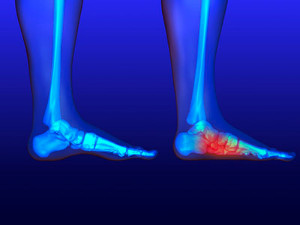
Flat feet, known as pes planus, is a common condition that affects the arches of the feet. Flat feet are characterized by a lack of arch in the foot's inner sole, causing the entire sole to make contact with the ground. While some individuals have flat feet from childhood, others may develop them later in life. One primary cause of flat feet is genetics. If your parents or grandparents had flat feet, there's a higher likelihood of inheriting the condition. Additionally, injuries or stress to the feet's tendons and ligaments can lead to flat feet. Wearing ill-fitting shoes that don't provide proper arch support can contribute to developing flat feet. Conditions like arthritis, obesity, and diabetes can also be factors. Aging is another common contributor, as conditions like osteoporosis can also lead to flat feet. Weakened bones may not provide the necessary support for the arches. Certain neurological conditions, like multiple sclerosis, may play a role in the development of flat feet. These disorders can affect the nerves that control foot muscles. Also, injuries or other foot-related issues can alter the foot's structure and result in flat feet. If you suspect you have flat feet and are experiencing discomfort, it's suggested that you consult a podiatrist for an exam and treatment options.
Flatfoot is a condition many people suffer from. If you have flat feet, contact one of our podiatrists from William Street Podiatry. Our doctors will treat your foot and ankle needs.
What Are Flat Feet?
Flatfoot is a condition in which the arch of the foot is depressed and the sole of the foot is almost completely in contact with the ground. About 20-30% of the population generally has flat feet because their arches never formed during growth.
Conditions & Problems:
Having flat feet makes it difficult to run or walk because of the stress placed on the ankles.
Alignment – The general alignment of your legs can be disrupted, because the ankles move inward which can cause major discomfort.
Knees – If you have complications with your knees, flat feet can be a contributor to arthritis in that area.
Symptoms
- Pain around the heel or arch area
- Trouble standing on the tip toe
- Swelling around the inside of the ankle
- Flat look to one or both feet
- Having your shoes feel uneven when worn
Treatment
If you are experiencing pain and stress on the foot you may weaken the posterior tibial tendon, which runs around the inside of the ankle.
If you have any questions please feel free to contact one of our offices located in William Street in New York, NY, Forest Hills, NY, and Broadway in New York, NY . We offer the newest diagnostic and treatment technologies for all your foot and ankle needs.
Preventing Falls While Running
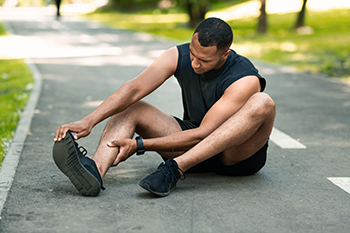
Running is a fantastic way to stay active and maintain a healthy lifestyle, but it is not without its risks. One common concern for runners, especially as they age, is the risk of falling. Falls can lead to painful injuries, making it essential to take precautions to stay upright and injury-free during your runs. To start, ensure that your running shoes fit properly and provide adequate support. Pay attention to the running surface by opting for well-maintained trails or sidewalks and being cautious on uneven or slippery terrain. Watch out for obstacles such as rocks, tree roots, or cracks in the pavement. Incorporate core strengthening exercises into your cross training routine to help with balance and stability, and to further reduce the risk of falls. Additionally, when running in low light conditions, wear reflective gear and use a headlamp or flashlight to improve visibility. Lastly, listen to your body to avoid overexertion or fatigue, which can lead to poor form and an increased risk of falling. If you have concerns about your foot health related to running, or need more guidance on fall prevention, it is suggested that you visit a podiatrist.
Preventing falls among the elderly is very important. If you are older and have fallen or fear that you are prone to falling, consult with one of our podiatrists from William Street Podiatry. Our doctors will assess your condition and provide you with quality advice and care.
Every 11 seconds, an elderly American is being treated in an emergency room for a fall related injury. Falls are the leading cause of head and hip injuries for those 65 and older. Due to decreases in strength, balance, senses, and lack of awareness, elderly persons are very susceptible to falling. Thankfully, there are a number of things older persons can do to prevent falls.
How to Prevent Falls
Some effective methods that older persons can do to prevent falls include:
- Enrolling in strength and balance exercise program to increase balance and strength
- Periodically having your sight and hearing checked
- Discuss any medications you have with a doctor to see if it increases the risk of falling
- Clearing the house of falling hazards and installing devices like grab bars and railings
- Utilizing a walker or cane
- Wearing shoes that provide good support and cushioning
- Talking to family members about falling and increasing awareness
Falling can be a traumatic and embarrassing experience for elderly persons; this can make them less willing to leave the house, and less willing to talk to someone about their fears of falling. Doing such things, however, will increase the likelihood of tripping or losing one’s balance. Knowing the causes of falling and how to prevent them is the best way to mitigate the risk of serious injury.
If you have any questions, please feel free to contact one of our offices located in William Street in New York, NY, Forest Hills, NY, and Broadway in New York, NY . We offer the newest diagnostic and treatment technologies for all your foot care needs.


